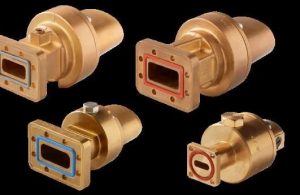What Are the Different Waveguide Flange Types?
Waveguide flanges are crucial components in the assembly of microwave transmission systems, providing the necessary interfaces for connecting sections of waveguides. Each type of flange serves a specific purpose, suited to various design requirements and operational conditions. Understanding the different waveguide flange types helps engineers choose the right connection method to ensure optimal system performance and reliability.

Rectangular and Circular Flange Types
Rectangular Standard Flanges
The most common type of waveguide flange is the rectangular standard flange. These flanges are typically used with rectangular waveguides, which are prevalent in most microwave systems. Rectangular flanges are designated by their EIA (Electronic Industries Alliance) standard numbers, such as EIA WR90 or WR75, where the "WR" stands for "Waveguide Rectangular," and the numbers denote the inside dimensions of the waveguide.
Circular Flanges for Circular Waveguides
Circular waveguides often use circular flanges. These are less common but crucial in applications involving rotary joints or systems requiring circular polarization. Circular flanges provide a robust and secure connection, essential for systems exposed to physical stresses or where alignment is critical.
Key Types Based on Mechanical and Assembly Characteristics
Choke Flanges
Choke flanges incorporate a "choke" structure, a small groove that helps improve the electromagnetic coupling between connected waveguides. This design enhances the electrical performance by reducing reflection at the joint, crucial in high-power applications or where minimal signal loss is paramount. Choke flanges are often used in military and satellite communications due to their superior electrical sealing capabilities.
Cover Flanges
Cover flanges are simpler in design and are typically used for less demanding applications where high power and minimal leakage are not critical. These flanges are cost-effective and easy to manufacture, making them suitable for commercial and some industrial applications.
Screw Flanges
Screw flanges are designed for applications requiring frequent disassembly and reassembly. These flanges have threaded holes that align with corresponding bolts on the mating flange, securing the connection without the need for additional clamping mechanisms. This type is particularly useful in research and development environments where waveguide configurations are frequently changed.
Applications and Importance
Communication Systems
In communication systems, especially satellite and radar, precise and reliable waveguide connections are essential. The choice of flange type directly affects the system's performance, influencing factors such as signal integrity, power handling, and system longevity.
Industrial and Scientific Equipment
In industrial and scientific settings, waveguide flanges must withstand harsh environments and high electromagnetic loads. Choke and circular flanges are particularly valued in these applications for their robustness and excellent electromagnetic sealing properties.
Enhancing System Design and Efficiency
Improved Interconnectivity
The use of specialized waveguide flanges improves the interconnectivity between system components, facilitating easier maintenance and upgrades. By choosing the appropriate flange type, engineers can significantly enhance the overall system design and efficiency.
Cost-Effective Maintenance and Upgrades
Using the correct type of flange can reduce costs associated with maintenance and system upgrades by minimizing signal losses and preventing component damage due to poor connections.
Waveguide Flange Types play a pivotal role in the design and functionality of RF and microwave systems, providing secure and efficient connections that maintain signal integrity and system reliability. Understanding these types helps in the proper selection and application of waveguide components, ensuring that the systems operate at their optimal capacity and meet the required technical standards.